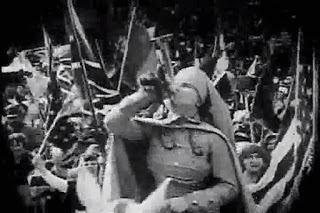On June 30, 1559 King Henry II of France met an unfortunate accident while pursuing a popular hobby. More on that in a bit.
If your French history is not up to snuff here is a thumbnail of Henry’s biographical highlights.
- Was born in 1509 as a younger son of Francis I.
- After his pop was captured by the Hapsburg Holy Roman Emperor in a disastrous battle in 1524 young Henry and his older brother, the heir apparent, were shipped off as hostages to be held by the Hapsburg King of Spain in their father’s stead.
- After being sprung Henry was married to Catherine de Medici. Both were 14 years old at the time. But Catherine had important familial connections—she was the daughter of the late Lorenzo de Medici II, ruler of Florence and the ward of her kinsman Pope Clement VI who brokered the marriage deal.
- Despite his comely young bride, Henry preferred 35 year old courtier Diane de Poitiers who remained his favorite mistress the rest of his life and who had enormous political influence over him.
- Henry's favorite mistress, courtier Diane de Poitiers, has herself become a romantic legend.
- In 1636 elder brother Francis died conveniently after a brisk game of tennis making Henry heir to the throne.
- Nine years later his father died and Henry succeeded to the crown on his 28th birthday.
- Henry busied himself with endless wars of conquest with the Hapsburgs in Italy and later Flanders and doing the Pope’s bidding by launching heavy persecution of the Protestant Huguenots.
- Henry's son and heir Francis was matched with Mary Queen of Scots who had been fostered in the French royal house, a shrew dynastic child marriage.
- Mary Queen of Scotts who inherited her throne in infancy, was raised in Henry’s household while Regents held sway in Scotland. He took care to marry his son Francis to her so that his Valois dynasty would ultimately have claim to the Scottish throne—and potentially the English one as well.
- Wrapped up his various wars with the Hapsburgs—now divided between Austrian and Spanish houses, in 1559 with The Peace of Cateau-Cambrésis with Elizabeth I of England, whose throne Mary had claim to, and Phillip II of Spain. Various land claims were settled. Henry won some but had to give up Savoy. But he married his sister off to the Duke of Savoy, so he kept a finger in that pie. And he sent his daughter Élisabeth to be Phillip’s bride.
- To celebrate the treaty, Henry threw a giant party which included an epic Tournament featuring the most celebrated
nobility and knights of Europe.
The fatal joust of Henry II.
Which brings us back to our story. Henry fancied himself a great knight and entered the Tournament. His opponent in the joust was the dashing captain of his Scottish Guard, Gabriel Montgomery. Somehow Montgomery’s lance penetrated the visor of Henry’s helmet injuring him in the eyes. The wound was gruesome, and would have blinded the king, but would not have been fatal today. But without antibiotics blood poisoning set in and the King died ten days later in agony.
His wife Catherine kept his mistress Diane from his bed side, although Henry repeatedly called for her. After the king died, Diane was sent packing in luxurious exile. Catherine ruled as ruled as Regent for two of her young sons, Mary’s husband Francis II who lived only a year as king, and Charles IX who sat on the throne until 1570. She was then a major advisor to her third son, Henry III, who ended up assassinated and was the end of the Valois dynasty.
By the way, Henry’s demise pretty much put an end to the sport of the Joust and has been called the last act of the Age of Chivalry.








